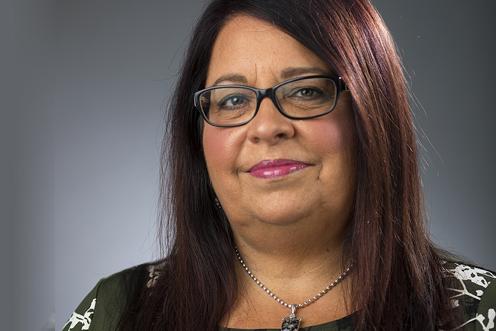Multi-Union Staffing Symposium Characterized by Hope and Unity

There are two words that characterize the Multi-Union Staffing Committee Symposium; unity and promise.
When NYSNA joined 1199SEIU, CWA, DC 37, PEF leaders and more than 500 participants at the first Multi-Union Staffing Committee Symposium on January 28, there was a palpable sense of unity. Unions have a history of forming coalitions around budget negotiations, electoral work and even climate justice work. But this is the first time we’ve formed a coalition across facilities and unions. We are uniting people on the ground for an issue that impacts all and will help all.
Healthcare workers appreciate unity and eagerly mapped plans at the gathering to ensure implementation of the hospital staffing law. While each union has waged individual fights to bring the law to fruition, it is remarkable to work collaboratively. In our union advocacy work, we do not always get the opportunity to come together.
A Sense of Hope
But in addition to unity, there was a sense of promise in the air. In one of the first moments since the pandemic began, healthcare workers seemed enthusiastic about the potential for relief as the staffing law moves closer to implementation. One of the things that came up over and over again is that regardless of a healthcare worker’s specific position, short staffing is a widespread challenge. Participants maintained that the historic staffing law would positively impact all workers, regardless of their assignment, as well as patients and communities. This belief led many to conclude that the future held promise.
NYSNA’s President Nancy Hagans seemed to agree when she shared with me, “This is a historic moment. Coming together under one campaign is inspiring.” Todd Hobler, Executive Vice President of 1199’s Upstate Division, seemed to echo that sentiment, and noted, “Today is the starting point of historic collaboration to win better staffing at all our hospitals.”
In fact, the staffing law, passed by the legislature in June 2021 and signed into law the following month, applies to ALL direct care workers in ALL hospitals in the state. It is an opportunity for collaboration with healthcare workers regardless of their union status; non-union workers will observe staffing levels in union facilities, and vice-versa. This will present an opportunity to engage healthcare workers on the merits of collective bargaining.
And in case anyone forgot, the purpose of our work is to ensure the best possible outcomes for nurses, patients, and communities. The symposium allowed attendees to really sit with the reason we are in this work in the first place:
- Ensure safe staffing
- Achieve a robust system of enforcement
- Use the law as a “tool to fight”
- Unite around a common plan
- Secure a safe workplace for all workers
- Develop stronger solidarity amongst all healthcare workers
Clinical Staffing Committee
The law establishes a clinical staffing committee at every hospital in New York State. It calls for a staffing plan for each hospital and mechanisms to respond to staffing concerns. What’s more, there is room for all healthcare workers from different disciplines to serve on the committee. The labor side of the committee is made up of RNs, LPNs and direct care workers. At least 50% of a facility’s committee is comprised of labor; an opportunity for workers to choose workers.
Other Requirements
Clinical staffing plans must be drawn up for each care shift based on the needs of patients and staff, with “specific guidelines on ratios, matrices or grids.” The plan should indicate how many patients are assigned to each RN and each ancillary staff. Staffing numbers are to be set for the entire patient care team. Staffing plans must be adopted on July 1, 2022 and implemented on January 1, 2023. The next plan would be adopted July 1, 2023 and implemented January 1, 2024.
The law empowers the New York State Department of Health to levy fines against employers.
Extraordinary Opportunity
Failure to follow the law, comply with it, reach consensus, share updates and amendments are subject to DOH review and fines. That includes DOH entering hospitals to carry out first-hand the investigations. Fines could be up to $5,000 per violation. To be effective, we really need the Department of Health to be an activist agency; this is the only thing that will keep workers and patients safe.
By October 31, 2024, a panel of nine sitting on an advisory commission (three from each of nursing practice, unions and hospital representatives) will make final a clinical staffing law.
“This is an extraordinary opportunity to work with fellow workers to establish staffing ratios which protect nurses and healthcare workers and ensure quality care for patients,” Hagans told me.
There is much to look forward to and we can move forward if we continue to operate in unity.
In fact, the staffing law, passed by the legislature in June 2021 and signed into law the following month, applies to ALL direct care workers in ALL hospitals in the state.”